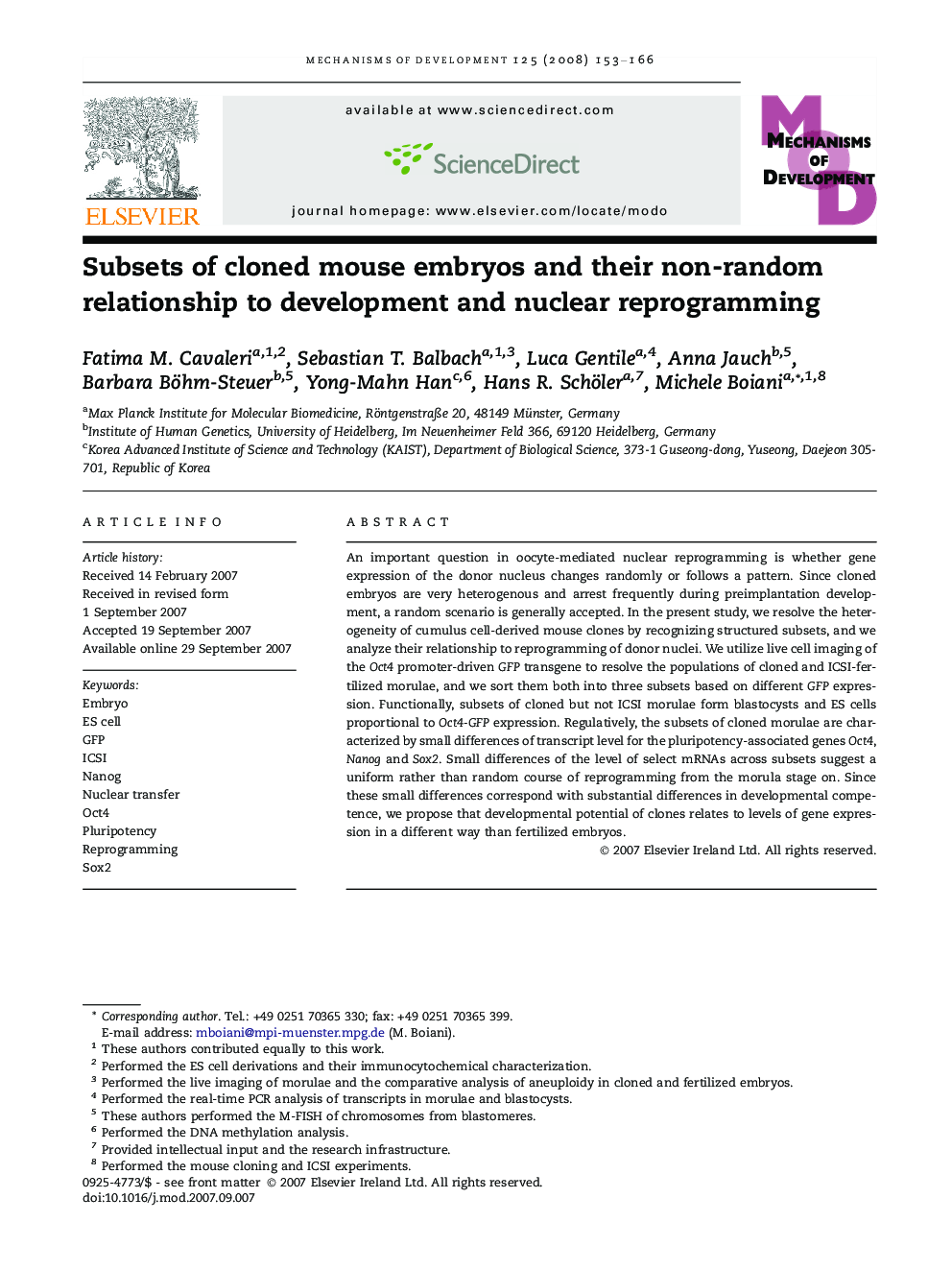| Article ID | Journal | Published Year | Pages | File Type |
|---|---|---|---|---|
| 2195385 | Mechanisms of Development | 2008 | 14 Pages |
An important question in oocyte-mediated nuclear reprogramming is whether gene expression of the donor nucleus changes randomly or follows a pattern. Since cloned embryos are very heterogenous and arrest frequently during preimplantation development, a random scenario is generally accepted. In the present study, we resolve the heterogeneity of cumulus cell-derived mouse clones by recognizing structured subsets, and we analyze their relationship to reprogramming of donor nuclei. We utilize live cell imaging of the Oct4 promoter-driven GFP transgene to resolve the populations of cloned and ICSI-fertilized morulae, and we sort them both into three subsets based on different GFP expression. Functionally, subsets of cloned but not ICSI morulae form blastocysts and ES cells proportional to Oct4-GFP expression. Regulatively, the subsets of cloned morulae are characterized by small differences of transcript level for the pluripotency-associated genes Oct4, Nanog and Sox2. Small differences of the level of select mRNAs across subsets suggest a uniform rather than random course of reprogramming from the morula stage on. Since these small differences correspond with substantial differences in developmental competence, we propose that developmental potential of clones relates to levels of gene expression in a different way than fertilized embryos.
